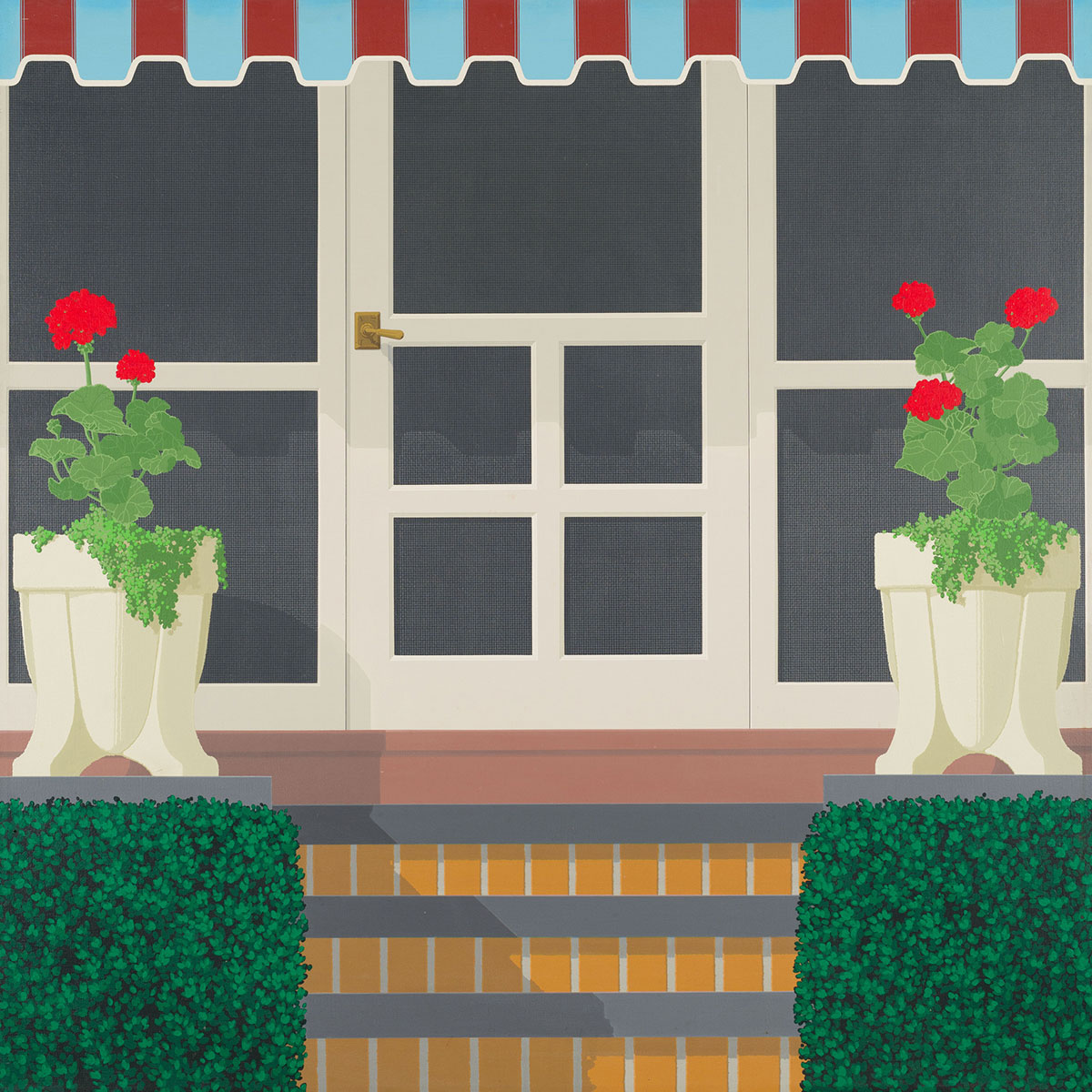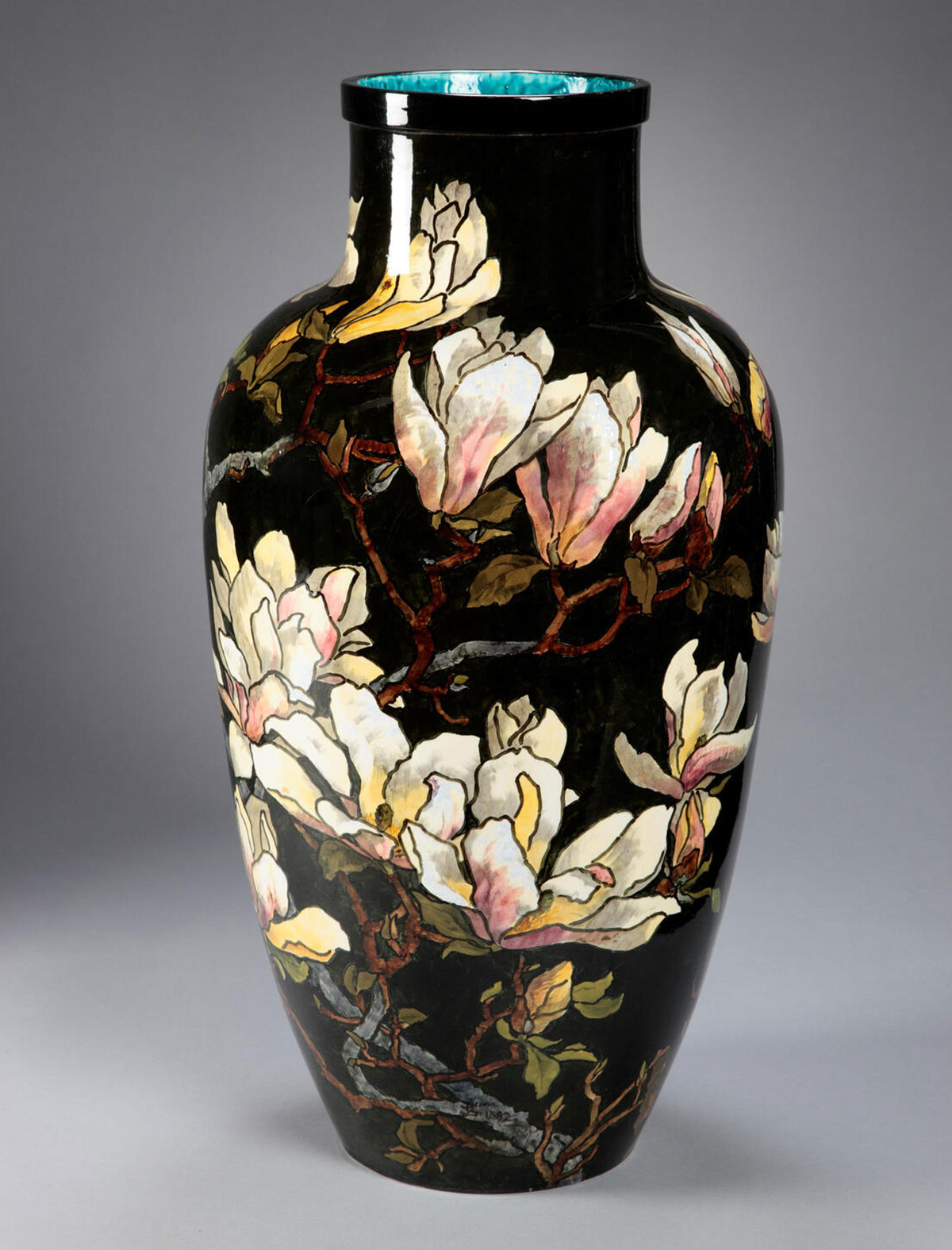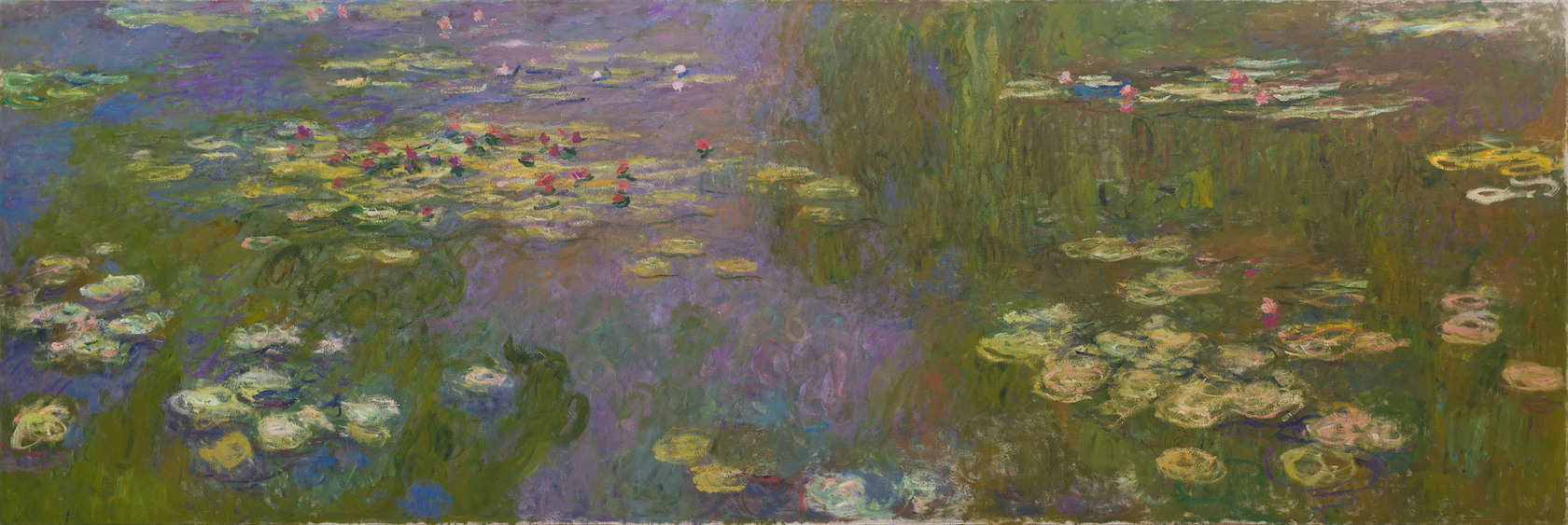This Tour Tuesday, as we anticipate Mother’s Day and embrace spring, we think of the ways that flowers captivate and inspire us. Artists find creativity everywhere, including nature’s beautiful blooms. To brighten your day, enjoy these floral views from our collection!

Mom’s Pots, by Carnegie Mellon University School of Art graduate Hugh Kepets, presents a warm, perhaps familiar scene. His paintings reduce elements to their essential details. While the home’s facade is rendered crisply, with precise bricks and creamy, white paint, it’s no wonder that what caught the artist’s eye are the candy-red geraniums flanking the front door.
“My job in life is to please myself doing the work I do,” Kepets said. What could be more pleasing than this welcoming home?

This large vase, decorated with painted magnolia blossoms, stands over two feet tall. Although it could be filled with fresh flowers, it’s stunning on its own. The British-American artist John Bennett was known for his bold brush strokes and floral subjects offset with jewel tones, like the splash of turquoise inside the vase’s rim. Stylized flowers were popular subjects with artists associated with the Aesthetic Movement, which lauded beauty and art for art’s sake.

It has been said that wildness is a luxury, a commodity that man will be forced to dispense with as his occupancy of the earth approaches saturation. If this happens, he is finished. Wilderness must be preserved; it is a spiritual necessity.
Eliot Porter was celebrated for his approach to nature photography. In 1972, Porter traveled to Iceland to photograph its often-overlooked vegetation, like these delicate pink flowers. Known as the father of color photography—he was the first to exhibit color photography at the Metropolitan Museum of Art in 1979—Porter would intensify the colors slightly in order to reveal “a new dimension in the perception and representation of nature in photography.”

Few artists are as famous for their gardens as they are for their paintings. Monet is the exception. Master of both brush and shovel, he drew inspiration from what he considered his “most beautiful masterpiece,” his vast garden at his home in Giverny. His beloved water lily pond made frequent appearances in his work, with its vibrant pink and white flowers floating serenely on the water’s surface.
The monumentality of Water Lilies (Nymphéas) is easily lost on a screen. Measuring six feet tall and almost twenty feet wide, the canvas is a rhythmic and exuberant display of color and brushwork.